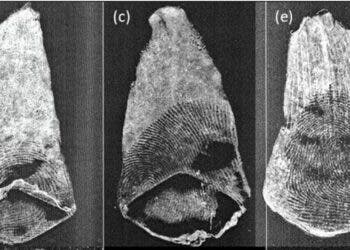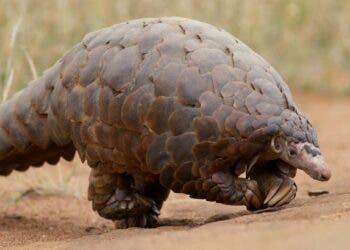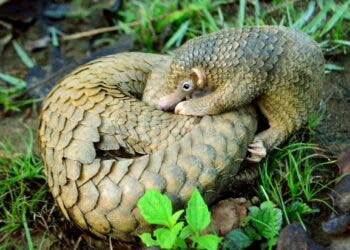This gentle and secluded creature is called a pangolin – bet you’ve never heard of him. It looks sort of like a walking pinecone, a dragon or a dinosaur. Its tongue is as long as its body and can curl, then roll in a scaly ball. It’s a pretty amazing animal and it’s a shame so few people know of its existence. But more worrisome is that the pangolin might cease to exist entirely, with or without us knowing about it. Many believe it’s the most trafficked animal in the world.
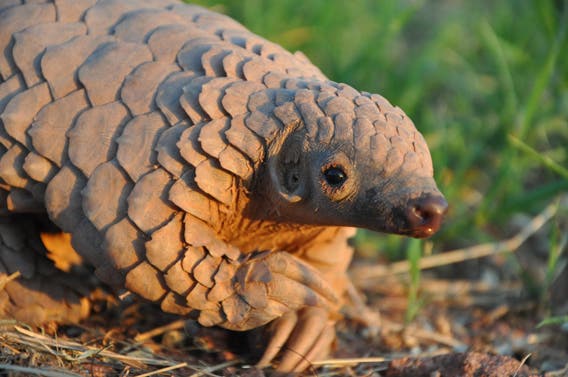
Elephants and rhinoceros make front news with heart breaking stories, but these are only the most notorious of the trafficked wildlife (the forth most profitable illegal business after drugs, counterfeiting of products and currency, and human trafficking). Every year, poachers take a whopping 38 million animals from the wilds of Brazil to meet the global demand for illegal wildlife. Most are birds, destined to become caged pets for owners in Rio de Janeiro or Sydney or Madrid or New York. Encouraged by low risk, high rewards and little government intervention, illegal animal trafficking has risen to worrying heights in the past decade.
“The current global approach to fighting illicit wildlife trafficking is failing, contributing to the instability of society and threatening the existence of some illegally traded species,” Dalberg Global Development Advisors concluded.
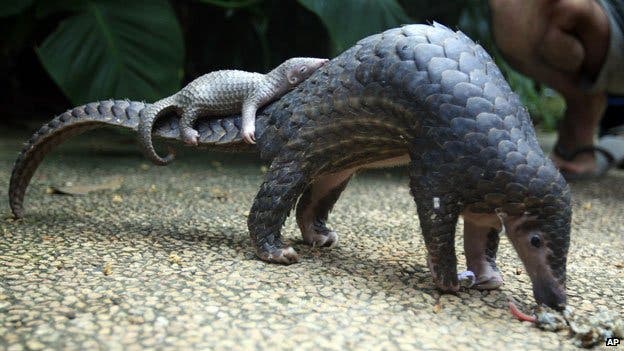
The pangolin is believed to be the most illegally trafficked animal in the world. According to highly conservative estimates, some 10,000 pangolins are trafficked illegally each year, most taken from Africa, on route to South-East Asia. The true number of trafficked pangolins over a two-year period was 116,990 to 233,980, according to Annamiticus, an advocacy group. Most of the animals wind up in Vietnam and China where they’re revered as a delicacy, but also as a potent medicine. Like rhino horns, the pangolin’s scales are believed to cure cancer and act as an aphrodisiac. This is of course false. Couple with deforestation, the illegal trade has been harsh on pangolin populations all over the world. All eight species of pangolin are classified by the IUCN as threatened to extinction, while two are classified as critically endangered.
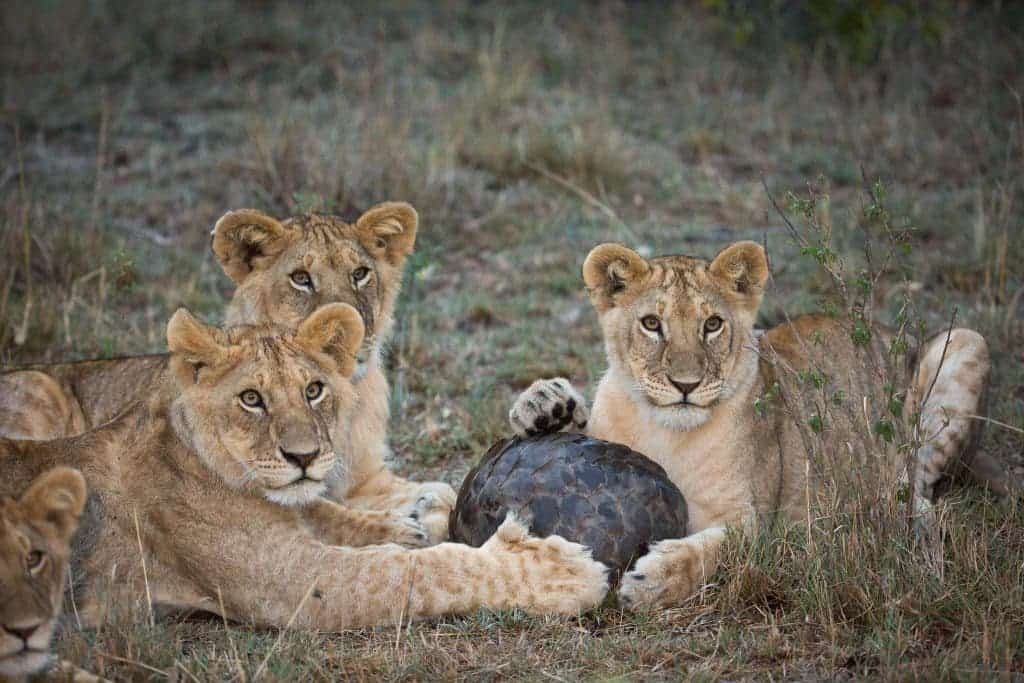
Little is known on the current distribution, life history or population size of the eight species of pangolin. This is partly because the pangolin is secretive, solitary and nocturnal. It’s incredible how poachers manage to capture these in such high numbers.
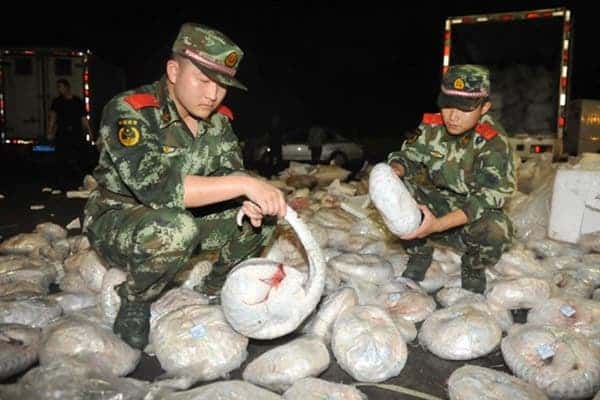
The demand is only going up, with a whole pangolin costing around $200 per kilogram on the black market, an increase of $120 since 2008. But don’t imagine this is a super risky business where traffickers go to great odds to deliver their products. When BBC’s Martin Fletcher visited four randomly chosen traditional medicine shops in Hanoi’s bustling old quarter, he found three which sold pangolin scales. These could go up to $1000 a kilo, and when asked why they were so expensive, one woman replied: “Because they’re rare and illegal.” Restaurants that serve pangolin are also easy to find in Vietnam.

The legal framework that could put retailers and traffickers behind bars is well in place. The only thing that’s missing is enforcement. Lax enforcement and high demand has put a lot of pressure on the pangolin’s adorable shoulders. Females can’t make more than a baby per year, making it very difficult for the species to recover from this widespread destruction. Thing is, unlike other species, the pangolin is highly sensitive to captivity. No one really knows why, but pangolins die very often when out of the wild. There are only a couple of zoos in the world which hold one. The San Diego Zoo is the only one in North America that has a pangolin, for instance. It used to have two, but the other one died of digestive issues- like most specimens kept in cages.
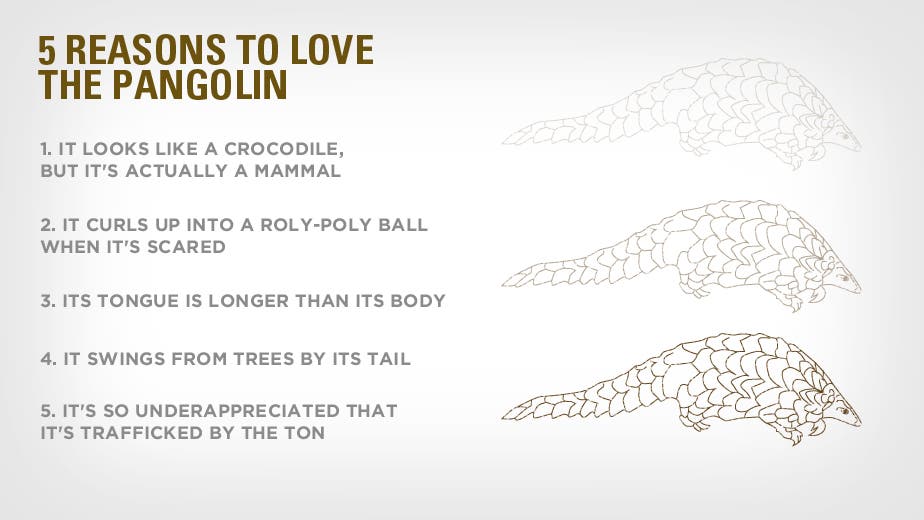
If you’d like help with this situation, consider supporting one or more of these organizations that have a pangolin conservation program:
- IUCN-SSC Pangolin Specialist Group www.pangolinsg.org
- African Pangolin Working Group www.pangolin.org.za
- Angkor Centre for Conservation of Biodiversity (ACCB) in Cambodia www.accb-cambodia.org
- ASEAN-WEN www.asean-wen.org
- Conservation International-Cambodia www.conservation.org
- Education for Nature Vietnam www.envietnam.org
- Fauna & Flora International www.fauna-flora.org
- Harapan Rainforest www.harapanrainforest.org
- Pangolin Research Mundulea pangolins-namibia.blogspot.com
- Save Vietnam’s Wildlife (Carnivore and Pangolin Conservation Program) www.savevietnamswildlife.org
- Tikki Hywood Trust www.tikkihywoodtrust.org
- TRAFFIC www.traffic.org
- Wildlife Alliance www.wildlifealliance.org (and donate directy to their pangolin program via their Global Giving page)
- Zoological Society of London (ZSL) www.zsl.org

